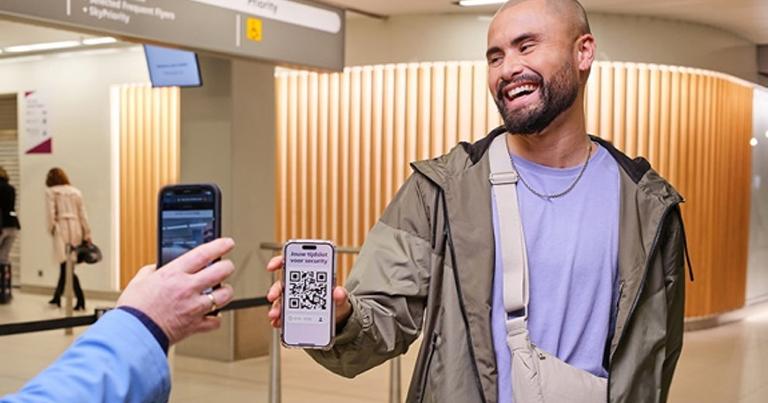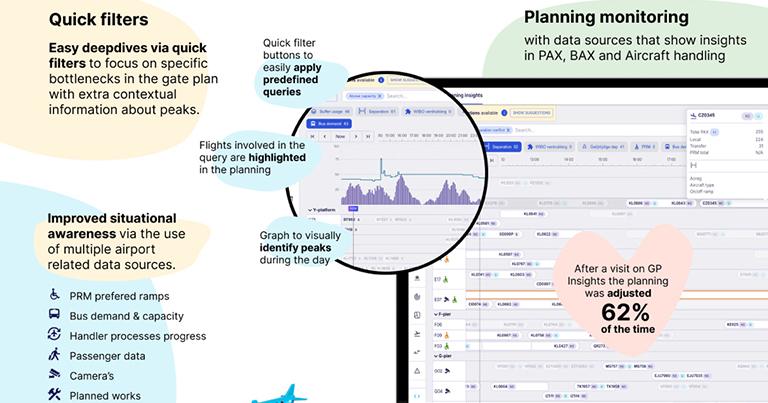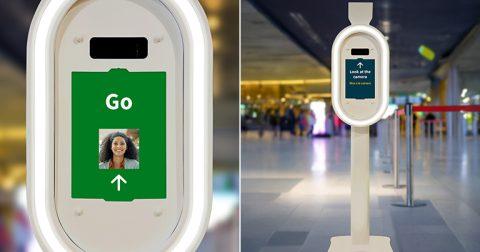Schiphol – a Corporate Partner of the FTE Digital, Innovation & Startup Hub – has the ambition to offer a passenger journey without waiting times, perfectly aligning demand and capacity. In this interview, ahead of his participation at FTE Global – the “CES of Aviation” taking place in Long Beach, California, on 9 to 11 September 2025 – Martijn van Boven, Product Manager, discusses how Royal Schiphol Group is leveraging technology, design and data, with in-house developed intelligence reducing passenger peaks by 22%, elevating CX and operational efficiency. At FTE Global, van Boven will deliver a joint presentation with Mohamed Talbi, Product Manager, Royal Schiphol Group.
View the full FTE Global 2025 schedule at a glance >> Register for FTE Global 2025 >>
“At Schiphol, we believe that a true passenger experience begins with seamless operations, not gimmicks,” says van Boven. “In this session, I’ll share how we’ve redefined airport capacity and flow management through in-house developed, artificial intelligence (AI)-powered tools. These include Dynamic Time Slots, Real-time Passenger Flow Balancing, and Gate Planning Insights which have dramatically reduced peak loads and waiting times while improving safety and operational efficiency. Our aim is bold: to become Europe’s new airport standard by 2030. I’ll show how data, design and intelligence are quietly transforming the airport experience. Behind the scenes, but with visible impact. This is not only about tech, it’s about transforming how our people, systems, and partners collaborate together.”
Schiphol has made tangible breakthroughs using digital solutions to manage airside activities and passenger flows. Three standout innovations are:
- Dynamic Time Slots: passengers pre-book a preferred security check time via Schiphol’s app or website. Using algorithms, the airport dynamically steers passengers just-in-time to their checkpoints, resulting in 7.5% of passengers steered to off-peak moments and so 99.6% of passengers wait under 10 minutes.
- Flow Balancing: on the day of operation, Schiphol uses real-time sensor data, predictive models, and simulations to steer passenger groups by flight, groups or time window. This digital twin approach prevented over 4,000 minutes of crowding in 2024 alone.
- Gate Planning Insights: on airside, Schiphol uses machine learning to optimise gate stand planning and turnaround operations, giving operators better control, higher predictability, and safer outcomes through data-driven insights.

“Our aim is to offer a passenger journey without waiting times,” van Boven explains. “To achieve this, we must perfectly align demand and capacity. Three days before departure, passengers can reserve their preferred security timeslot. Behind the scenes, our intelligent algorithm dynamically allocates these slots based on various inputs, such as flight date, flight number, planned capacity, and historical show-up patterns. Timeslots help spread passenger arrivals across available capacity. This approach resulted in an average of 7.5% of passengers being steered away from peak moments, rising to 22% on critical days, all without passengers noticing. They simply experience a smooth and stress-free journey.”
This not only reduces stress and congestion, but also lowers staffing costs, minimises missed flights, and decreases passenger claims. High-tech on the inside, peace of mind on the outside.
During daily operations, control room operators monitor advanced dashboards that provide predictive insights into passenger demand and capacity. “These insights support them in making well-informed and integral decisions,” van Boven shares. “One such decision might involve optimising capacity by redirecting passengers from a crowded border control filter to a nearby one with more availability. This proactive approach enables Schiphol to make the most of its available capacity, reduce waiting times, and prevent unsafe situations caused by overcrowding.”
The next frontier: orchestrated, data-driven airport ecosystems
Schiphol believes the next frontier in digital transformation for airports lies in orchestrated, data-driven airport ecosystems where AI, real-time data, and human expertise seamlessly work together across the entire operation. Van Boven highlights several ways in which Schiphol is leading this shift:
- Augmented Decision Making (ADM): “Tools like Gate Planning Insights, PAX Flowbalancing and DeepTurn empower our employees with AI-powered suggestions and real-time trade-off support, while keeping humans in control.”
- Digital Twins: “We’re building real-time digital replicas of airport operations to simulate scenarios and optimise performance.”
- Autonomous Airside Operations: “By 2050, we aim for fully autonomous, zero-emission airside logistics with self-driving vehicles already being tested.”
- Private 5G and Internet of Things (IoT): “Schiphol has deployed a private 5G network, providing the backbone for secure, scalable, and real-time operations.”
The ambition is to be Europe’s smartest airport by 2030, setting the benchmark for seamless, scalable, and sustainable operations.

Cross-functional teams that can quickly adapt and deliver integrated value
At Schiphol, the emphasis is on working with so-called Business Platforms. These are decentralised IT teams dedicated to specific business domains. “In my case, this is Operations,” says van Boven. “Our role is to support, challenge, and transform the operational domain using technology, design and data. This structure creates direct communication lines and fast feedback loops between development teams and the business, where our users are. When solutions involve multiple business units, we form cross-functional teams that can quickly adapt and deliver integrated value. We also make it a priority to co-create solutions, meaning we build with frontline staff instead of for our frontline staff. We spend many hours listening to their concerns, best practices, and ideas, and document everything carefully. I believe this is one of the most effective ways to deliver sustainable value, where every perspective is acknowledged and respected.”
Indeed, Schiphol applies this belief not only in development, but also in how it prepares for and analyses operations. “In our Airport Operations Center (APOC), key sector partners work together in the same room, using predictive and real-time data to align decisions,” van Boven shares.
Balancing innovation with the passenger experience is paramount, with the focus on using technology to improve customer satisfaction or reduce friction in traveller journeys.
“Our philosophy is that the passenger should always benefit from innovations,” van Boven explains. “Innovation means nothing unless it solves a real problem for real people. We are innovating behind the scenes, without passengers noticing it. With Time Slots, passengers think they just reserve a timeslot to be in control, but there is a complex optimising calculation done to offer them no waiting times. The result? A 4.4 out of 5 passenger satisfaction score, and 99.6% of passengers wait under 10 minutes! We’ve also embedded Flow Balancing into terminal signage and wayfinding, dynamically adjusting routes without disrupting passenger flows. Again, passengers magically wait less while just following the right signage in the terminal. We manage the complexity, so passengers don’t have to.”

Key lessons from Schiphol’s innovation journey
As airports around the world look to further digitise their operations, van Boven shares some key lessons from Schiphol’s journey that could be applied to other airports:
- “Start with real pain-points, not flashy features. Our journey began by identifying passenger stress at security as the key issue to address.”
- “In-house development matters. It enabled us to tailor solutions that truly fit our people, processes, and passengers – rather than relying on off-the-shelf market solutions. Designed and developed by an airport to solve airport problems.”
- “Multi-disciplinary teams within the business. By embedding software engineers, UX designers, data engineers, scientists, analysts, and operational experts in a single team, we significantly increased our execution power and delivered sustainable value through close co-creation with the business.”
- “Make data your compass. Data is essential for driving impact and continuous improvement – from guiding daily decisions to demonstrating value. Without data, we wouldn’t be able to navigate through testing, failing, validating, or proving our impact (e.g. a 22% peak load reduction or a 4.4 passenger satisfaction score).”
- “Think in systems, not silos. A chain is only as strong as its weakest link, and the same applies to the passenger journey. Optimising a single process in isolation doesn’t improve the end-to-end experience. Every part of the chain must be aligned and working in sync.”
FTE Global: “shaping the future of aviation and exchanging ideas with innovators”
Looking ahead, van Boven is eager to participate at FTE Global – the “CES of Aviation” taking place in Long Beach, California, on 9 to 11 September 2025. “I’m excited to connect with peers who are shaping the future of aviation and to exchange ideas with innovators tackling similar challenges. I also look forward to inspiring others by sharing Schiphol’s approach of using intelligence behind the scenes to deliver real value to both our operations and our passengers.”
View the full FTE Global 2025 schedule at a glance >> Register for FTE Global 2025 >>You may also be interested in
12 technology and CX trends that can enhance airline and airport operations in 2025
APEX FTE EMEA and Ancillary & Retailing 2025 in pictures – ‘Innovate to Elevate’







